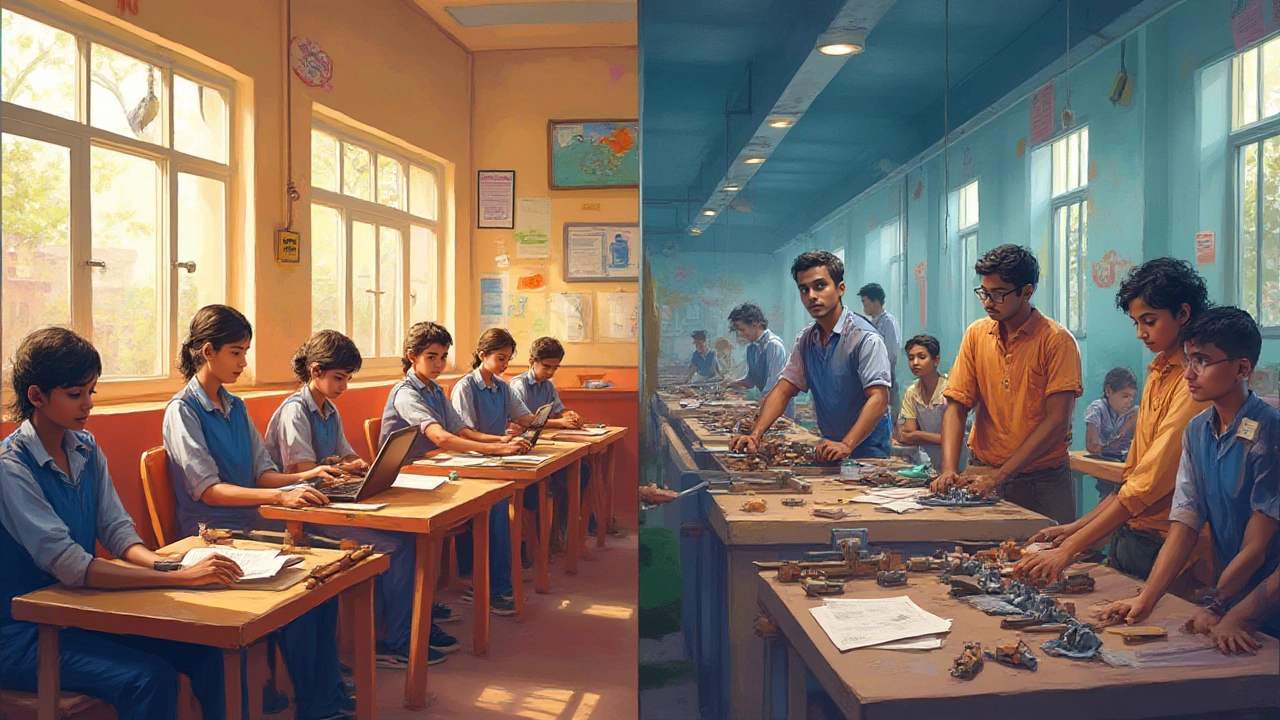
Vocational Education – Your Quick Guide to Skills, Jobs, and the Right School
If you’re looking for a fast way to start earning, vocational education might be the answer. Instead of spending four years in a traditional university, you can learn a specific skill and jump straight into a job that pays. It’s practical, it’s affordable, and it’s growing fast in India and abroad.
Different Names for Vocational Schools
When you Google "vocational school" you’ll see many other names pop up: trade school, career college, technical institute, or even skill center. All these terms point to the same idea – an institute that teaches you a job‑ready skill. Trade schools focus on hands‑on trades like welding, plumbing, or automotive repair. Career colleges often bundle multiple short courses such as graphic design, digital marketing, or hospitality management. Technical institutes might specialize in IT, networking, or electronics. Knowing these names helps you spot the right program in your city or online.
Top Vocational Courses and Career Paths
What can you actually study? The list is huge, but here are a few popular options that lead to good pay and steady demand:
1. Healthcare Support – courses for medical assistants, lab technicians, or nursing aides. Hospitals need these roles everywhere, and the training can be finished in 6‑12 months.
2. IT and Networking – certifications like CompTIA A+, Cisco CCNA, or Google IT Support. You can start working as a help‑desk tech or network admin right after the course.
3. Skilled Trades – electrician, plumber, carpenter, or automotive technician. Apprenticeships combine classroom learning with on‑the‑job experience, and the salaries rise quickly with experience.
4. Creative Media – graphic design, video editing, or animation. With the rise of digital content, freelancers and agencies are constantly hiring.
5. Hospitality and Tourism – front‑office management, culinary arts, or event planning. India’s tourism boom means plenty of job openings in hotels and resorts.
Choosing a course starts with asking three quick questions: Do you enjoy the daily tasks of this job? Is there a clear path to a good salary? Can you find a reputable institute nearby or online?
One handy trick is to check the placement record of the school. Good vocational schools publish stats on how many graduates land jobs within three months. If a school can’t share that info, ask them directly – a transparent institute will be happy to answer.
Another tip is to look for industry partnerships. Some trade schools work directly with manufacturers or service firms, offering apprenticeships that count as both training and work experience. Those partnerships can turn a classroom project into a full‑time job offer.
Financing your education is often easier than a degree. Many state governments and private NGOs offer scholarships for skill‑based training, especially in underserved areas. You can also explore EMIs or short‑term loans that have low interest rates for vocational courses.
After you finish, don’t just sit back. Build a simple portfolio: a list of projects, certifications, and a short resume highlighting the hands‑on skills you’ve gained. Share it on LinkedIn or local job portals, and let recruiters know you’re ready to work.
In short, vocational education gives you a clear road to a job, a decent salary, and the confidence to start your career fast. Whether you call it a trade school, career college, or technical institute, the goal stays the same – learn a skill, get certified, and start earning.
